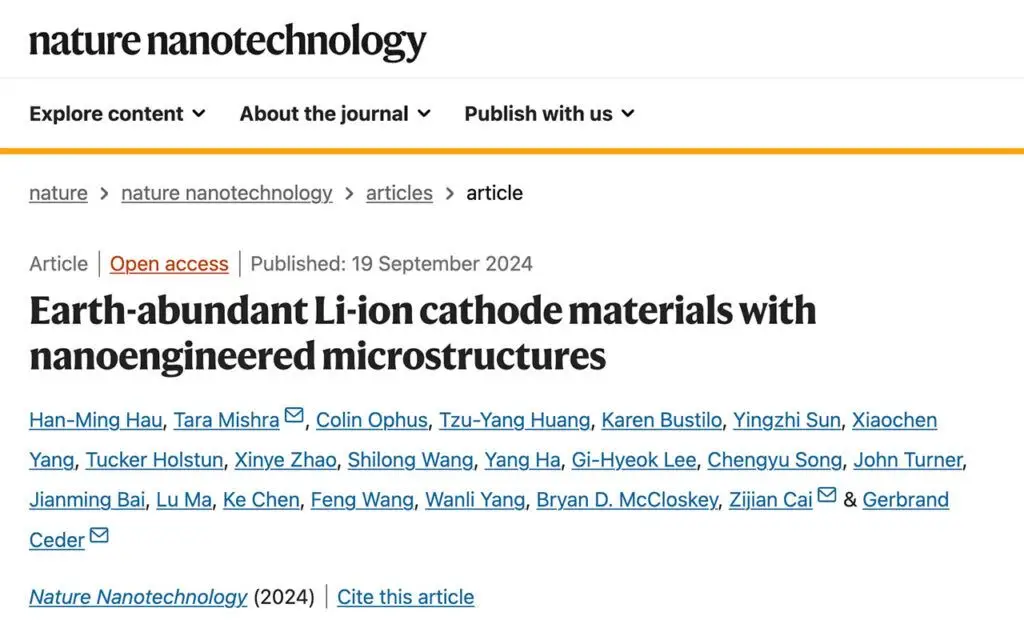Manganese-based materials are gaining attention as promising candidates for next-generation lithium-ion battery cathodes, primarily due to their abundance, low cost, and stability. A recent study published in Nature Nanotechnology highlights a significant advancement in this area, demonstrating how the mobility of manganese cations can be harnessed to create unique nanoscale microstructures within larger cathode particles, thereby enhancing their electrochemical performance.
Researchers have unveiled a novel method to enhance manganese-based Li-ion cathode materials by engineering nano-sized microstructures within large particles. Manganese is an attractive alternative to nickel and cobalt due to its abundance, low cost, and stability. However, integrating it into high-performance cathodes has been challenging because of issues with energy density and rate capability, especially in larger particle sizes.
The research team demonstrated that by partially removing lithium from a high-manganese-content, disordered rocksalt cathode and applying mild heat, they could induce the formation of a nanomosaic structure. This structure consists of partially ordered spinel domains measuring between 3 and 7 nanometers, which are separated by antiphase boundaries. These nanoscale domains effectively reduce the coherence length within the material.
This reduction in coherence length transforms the typically detrimental two-phase lithiation reaction near 3 volts—common in regular spinel structures—into a more favorable solid solution process. As a result, the cathode material exhibits improved electrochemical performance, delivering a discharge capacity of 200 milliampere-hours per gram. Notably, this high performance is achieved even with an average primary particle size of about 5 micrometers.
The findings offer new synthesis strategies for creating high-performance, manganese-based cathodes using Earth-abundant materials. They also provide valuable insights into nanoengineering spinel-like phases, potentially advancing the development of more sustainable and cost-effective lithium-ion batteries. This work could significantly impact the future of energy storage technologies by reducing reliance on scarce and expensive elements like nickel and cobalt.
Source: Nature Nanotechnology
Hau, HM., Mishra, T., Ophus, C. et al. Earth-abundant Li-ion cathode materials with nanoengineered microstructures. Nat. Nanotechnol. (2024). https://doi.org/10.1038/s41565-024-01787-y
















